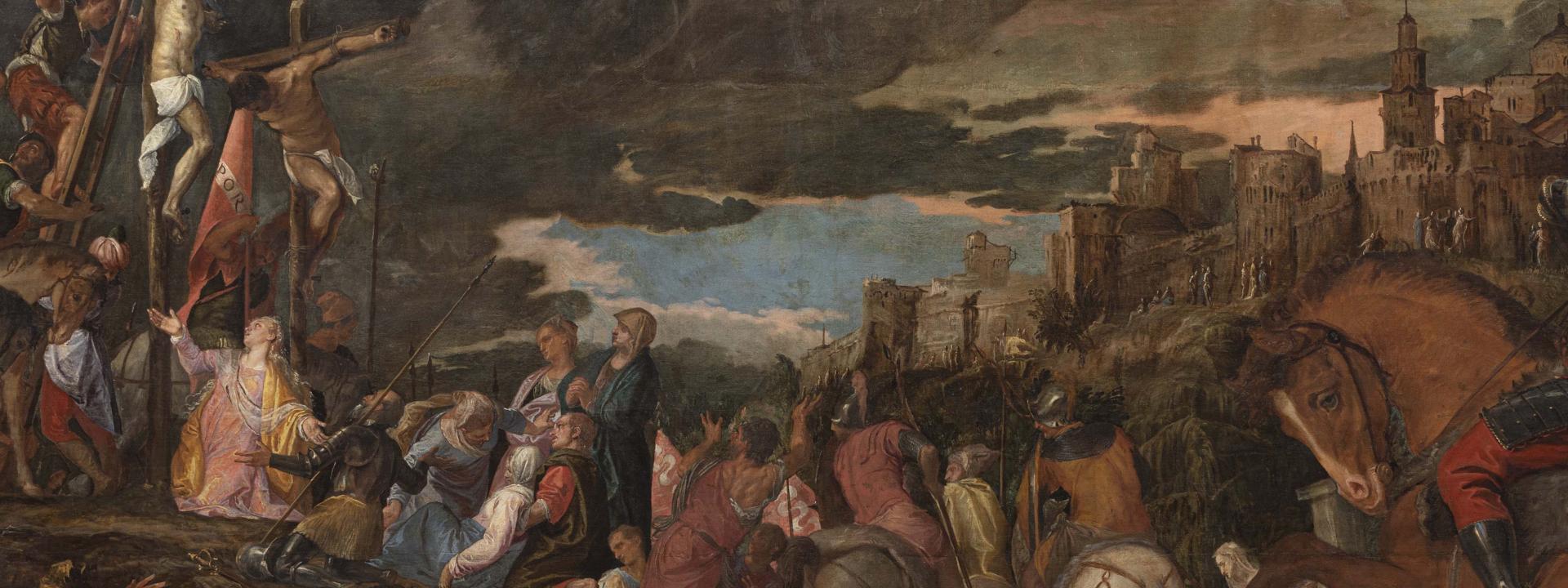When the church of San Niccolò della Lattuga behind the Basilica dei Frari was demolished it was stripped of its paintings, which were all sent to the Gallerie dell’Accademia with the exception of Titian’s altarpiece which is now at the Pinacoteca Vaticana. This huge Crucifixion belongs to Veronese’s later work, around 1582. His palette is gradually darkening due to the more sombre mood in Venice following a deadly outbreak of the plague in 1575. The intensely dramatic nature of this work is more akin to Tintoretto’s tumultous scenes than the luminous atmosphere of Veronese’s painting from earlier decades. The gathering stomclouds add to the effect and in the foreground a demon seems to be emerging from the bowels of the earth, terrifying onlookers and causing the horse on the right to rear up. In the background, the city of Jerusalem provides a ghostly backdrop and a reminder of Christ’s passion.
- Visit
- What's on
- On-line collections
- SEATS
- Exhibitions
- EDUCATION PROGRAMMES
- Online Activities
- Artworks not on display
- SPACES AND IMAGES CONCESSIONS
- SUPPORT US
-
TRANSPARENT ADMINISTRATION
- GENERAL PROVISIONS
- ORGANISATION
- CONSULTANTS AND COLLABORATORS
- STAFF
- PERFORMANCE
- Bandi e gare
- CONTRACTS
- Determine
- PROVVEDIMENTI
- BALANCE SHEETS
- GRANTS, CONTRIBUTIONS, SUBSIDIES, ECONOMIC ADVANTAGES
- ADMINISTRATIVE PAYMENTS
- LEGAL PROCEDURES
- ADMINISTRATIVE SUPERVISION AND EVALUATION
- ACCESSO CIVICO
- SERVICES PROVIDED
- OTHER CONTENTS
- CREDITS
- CONTACT
- English
- italiano




